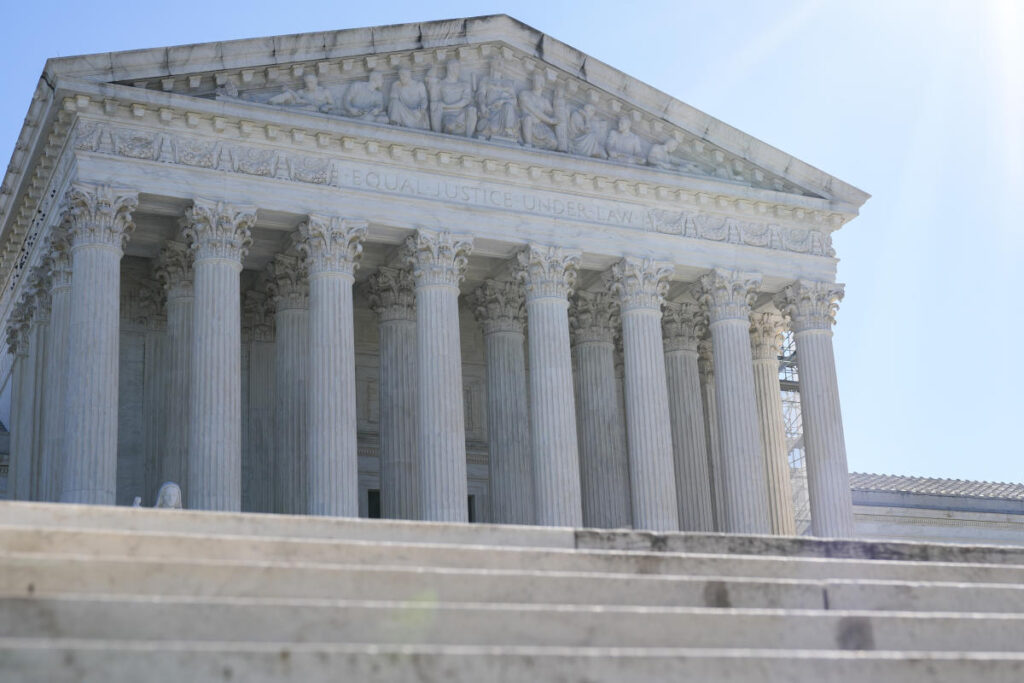On a recent Tuesday, the Supreme Court engaged in a lively and rather unconventional oral argument regarding a crucial regulation surrounding “ghost guns,” which are often untraceable gun kits available for purchase online. The debate centered around a Biden administration rule enacted two years prior aimed at tightening controls on these components by mandating background checks for purchases and the documentation of serial numbers to facilitate the tracing of firearms used in crimes. This particular case forced the justices to delve into real-world analogies, illuminating the complexities of defining what constitutes a complete firearm versus mere parts or kits. Justice Samuel Alito notably posed hypothetical scenarios involving grocery lists and cooking to illustrate the court’s struggle with delineating the threshold at which components qualify as regulated firearms.
During the hearing, Alito utilized illustrative items such as a pen and notepad to argue that components that may be transformed into something else do not inherently possess that identity until actively converted. Solicitor General Elizabeth Prelogar, representing the government, countered his arguments by asserting that certain components, which are solely designed and intended for the assembly of firearms, should be recognized as firearms in their own right. Justice Amy Coney Barrett entered the discussion with a novel analogy concerning meal kits, suggesting that when all ingredients are bundled together for a designated dish, they may be comprehended as that dish, thereby supporting a broader interpretation of the government’s regulatory powers in defining firearm kits.
Interestingly, Justice Barrett’s intervention illustrated a significant pivot point; she had previously aligned with the liberal justices in supporting the ghost-gun rule against lower-court injunctions that deemed it an overreach of the power granted by Congress under the Gun Control Act of 1968. Chief Justice John Roberts echoed similar skepticism towards the argument that the federal government should regulate firearms yet abstain from imposing regulations on kits designed to create them. The deliberations revealed a shared apprehension among certain justices – particularly in acknowledged instances where rudimentary construction efforts, such as drilling holes, could convert seemingly innocuous kits into fully operable firearms.
The oral arguments showcased contrasting perspectives, with lawyers for the gun-kit manufacturers suggesting that building guns could be likened to the hobbyist culture surrounding vehicle restoration—viewing firearm assembly as a legitimate and recreational pursuit. Yet Chief Justice Roberts responded critically, indicating that the simplicity of the conversion process might not equate to the rewarding nature of working on a classic car. The justices’ discussions hinted at a growing inclination amongst some conservative members of the bench toward supporting the regulation, contrasting with earlier decisions that left the rule blocked.
The conversation also touched on broader implications and potential overreach of regulations. Justices Neil Gorsuch and Brett Kavanaugh, previously opposed to the ghost-gun rule, conveyed hesitations regarding restoring the regulation, particularly concerning its implications on innocent hobbyists who might inadvertently risk legal repercussions under the defined rules. Alito even pressed the issue of ambiguity in the terms proposed by the government, particularly what could be seen as “readily” convertable parts, reflecting the intricate questions that arise when legal definitions blur with practical applications.
This case carries considerable weight as it comes on the heels of a separate ruling that rejected a prior administration’s attempt to ban bump stocks—another firearm accessory linked to increased lethality in mass shootings. While the court navigates the current arguments premised solely on interpretations of existing laws and the Bureau of Alcohol, Tobacco, Firearms and Explosives’ (ATF) authority, the discussions foreshadow potential ramifications on the evolving landscape of federal gun control measures. Notably, the considerations echo a broader context of Second Amendment rights, which the Court has expanded in recent years, prompting renewed scrutiny of longstanding regulations on firearms and ammunition. The justices’ deliberations illuminate the profound difficulties inherent in establishing clear regulatory frameworks that balance public safety with individual rights under the Constitution.

